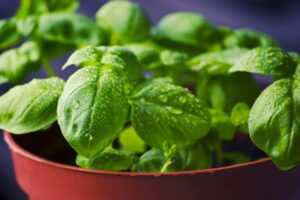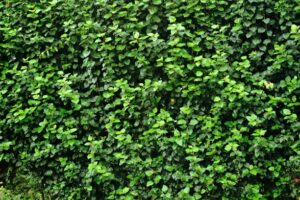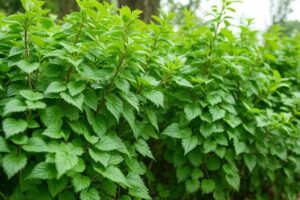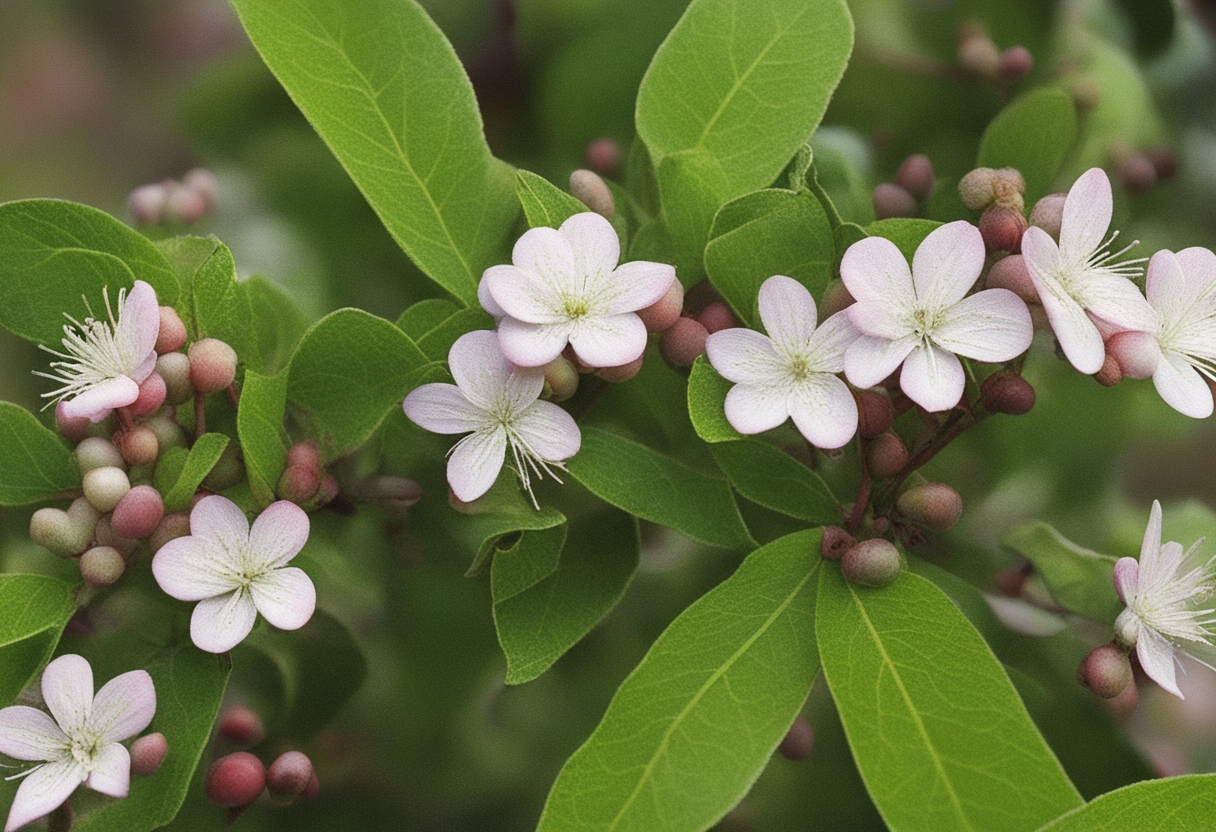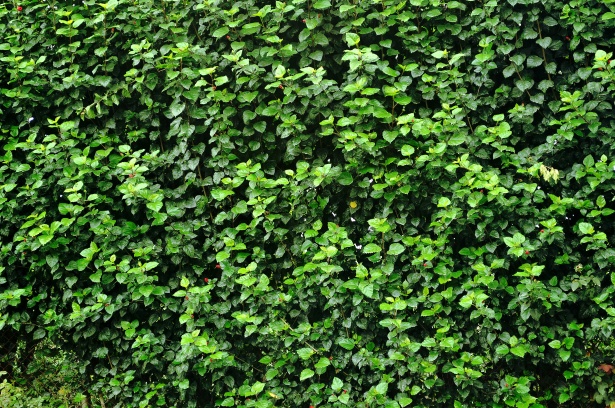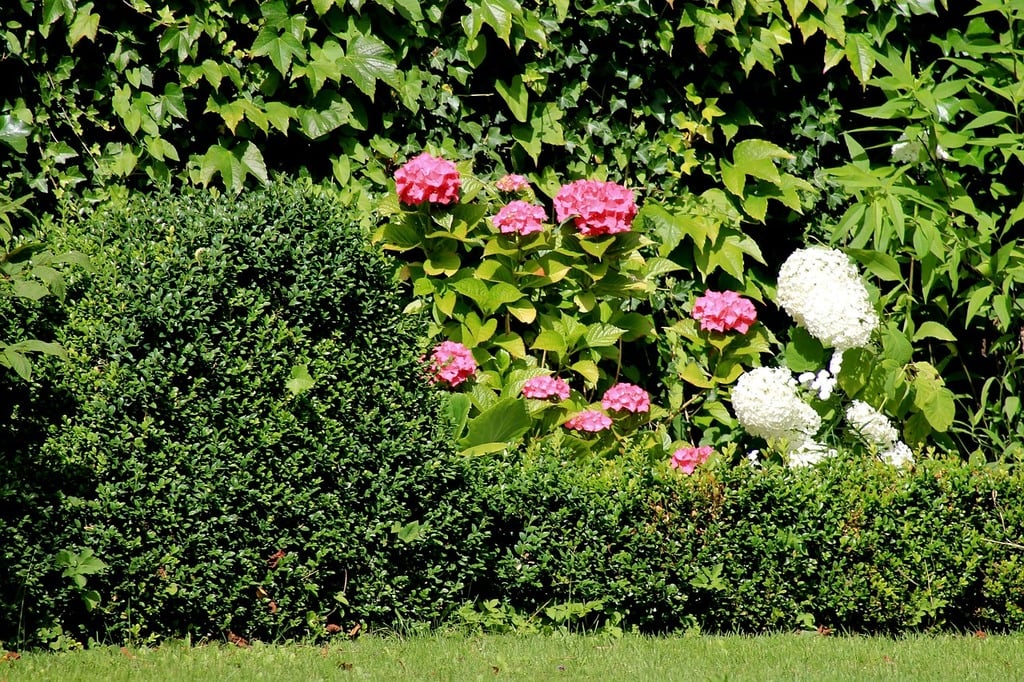Understanding the Basics of Propagation: Exploring the Science behind Growing New Shrubs from Cuttings
Exploring the science behind growing new shrubs from cuttings is a fascinating journey into the realm of plant propagation. This technique allows you to create new plants that are genetically identical to the parent plant, making it an efficient and cost-effective way to expand your garden.
Propagation from cuttings relies on the plant’s ability to regenerate cells and form new roots. When a healthy stem is cut from the parent plant and placed in a suitable growing medium, it has the potential to develop into a fully rooted plant. Understanding the underlying science behind this process is crucial to achieve success in propagation. Factors like hormone balance, moisture levels, and environmental conditions all play a role in the development of roots. By grasping these fundamental principles, you can effectively manipulate the variables to promote successful rooting and ensure the growth of strong and healthy new shrubs.
• Propagation from cuttings is a technique that allows you to create genetically identical plants to the parent plant.
• It is a cost-effective way to expand your garden.
• The process relies on the plant’s ability to regenerate cells and form new roots.
• Factors like hormone balance, moisture levels, and environmental conditions play a role in root development.
• Understanding these principles helps promote successful rooting and ensure healthy growth.
Selecting the Ideal Time and Tools: Essential Factors to Consider before Propagating Shrubs
One of the key factors to consider before propagating shrubs is selecting the ideal time for the process. Timing is crucial as it greatly affects the success rate of propagation. Generally, the best time to propagate shrubs is during their dormant season. This is typically in late winter or early spring before new growth begins. During this time, the shrubs are less likely to experience transplant shock and have a higher chance of successful rooting. It is important to research the specific shrub species and determine their optimal time for propagation, as it may vary depending on the plant.
In addition to timing, having the right tools is essential for successful propagation. Sharp and clean pruning shears or secateurs are necessary for making clean cuts on the stems. It is important to ensure that the tools are sanitized properly to minimize the risk of transmitting diseases to the shrub. A clean and sanitized cutting board or surface should also be used to prepare the cuttings. Additionally, having the appropriate containers, such as pots or trays, to hold the cuttings and propagation medium is crucial. Using high-quality soilless potting mix or a propagation medium specifically designed for rooting cuttings can greatly enhance the success of the process. By considering the ideal timing and having the necessary tools, you can significantly improve your chances of successful shrub propagation.
• Timing is crucial for successful shrub propagation
• The best time to propagate shrubs is during their dormant season, typically in late winter or early spring
• Research the specific shrub species to determine their optimal time for propagation
• Propagating during the dormant season reduces the risk of transplant shock and increases rooting success
• Having the right tools is essential for successful propagation
• Sharp and clean pruning shears or secateurs are necessary for making clean cuts on stems
• Tools should be properly sanitized to minimize disease transmission to the shrub
• Use a clean and sanitized cutting board or surface when preparing cuttings
• Using appropriate containers, such as pots or trays, is crucial for holding cuttings and propagation medium
• High-quality soilless potting mix or a specifically designed propagation medium enhances success rates
of rooting cuttings
By considering ideal timing and having necessary tools, you can significantly improve your chances of
successful shrub propagation.
Identifying the Most Suitable Shrubs for Propagation: Choosing the Right Varieties to Ensure Success
When it comes to propagating shrubs, choosing the right varieties is crucial for a successful outcome. Not all shrubs are suitable for propagation through cuttings, so it’s important to identify those that have a higher chance of rooting and thriving. Generally, shrubs that are known for their vigorous growth and ability to regenerate are excellent candidates for propagation. These shrubs often possess characteristics such as robust root systems, strong stems, and a tendency to readily form new shoots. By selecting such varieties, gardeners can increase their chances of achieving successful propagation and establishing healthy new shrubs in their gardens.
Another factor to consider when choosing shrubs for propagation is the intended purpose or desired traits of the new plants. Some gardeners may be looking to propagate shrubs with specific characteristics, such as abundant flowers, attractive foliage, or a compact growth habit. In such cases, it is important to select varieties that already exhibit these traits in order to increase the likelihood of the propagated plants inheriting them. Additionally, gardeners should consider the local climate and growing conditions, as certain shrubs may be better suited to thrive in specific environments. Overall, by carefully choosing the most suitable shrubs for propagation, gardeners can enhance their chances of success and create thriving, beautiful gardens filled with their favorite varieties.
• Not all shrubs are suitable for propagation through cuttings
• Shrubs with vigorous growth and ability to regenerate are excellent candidates for propagation
• Characteristics such as robust root systems, strong stems, and a tendency to readily form new shoots make shrubs suitable for propagation
• Intended purpose or desired traits of the new plants should be considered when choosing shrubs for propagation
• Select varieties that already exhibit specific characteristics desired in the propagated plants
• Consider local climate and growing conditions when choosing shrubs for propagation
Preparing the Cuttings: Step-by-Step Instructions on Properly Collecting and Handling Plant Material
Properly collecting and handling plant material is a crucial step in the propagation process. It begins with selecting healthy parent plants that exhibit desirable traits such as vigorous growth and disease resistance. When picking stems or branches for cuttings, it is important to choose those that are neither too firm nor too soft. Stems that are fully matured or woody may be too difficult to root, while tender, young shoots may lack the necessary energy to develop successful roots. It is best to opt for semi-hardwood stems that are somewhere in between, as they have a good balance of firmness and pliability.
Once the appropriate plant material has been selected, it is important to use clean, sharp tools for making the cut. Dull or dirty tools can lead to messy and uneven cuts, which may increase the chances of infection or disease. Pruning shears or a sharp knife should be employed to make a clean cut at a 45-degree angle. This angle increases the contact area between the stem and the rooting medium, enhancing the chances of successful rooting. Before cutting, it is advisable to disinfect the tools by wiping them with a solution of 70% isopropyl alcohol or by dipping them in a bleach solution, as this helps prevent the spread of pathogens. By following these steps, gardeners can ensure that the plant material is collected and handled in the most effective and hygienic manner.
• Select healthy parent plants with desirable traits
• Choose stems or branches that are semi-hardwood, not too firm or too soft
• Use clean and sharp tools for making the cut
• Make a clean cut at a 45-degree angle to increase contact area with rooting medium
• Disinfect tools before cutting to prevent spread of pathogens
Preparing the Propagation Medium: Creating the Perfect Environment for Rooting Cuttings
When it comes to preparing the propagation medium for rooting cuttings, creating the perfect environment is crucial for successful plant propagation. The propagation medium serves as the foundation for the cuttings to develop roots and grow into healthy plants. It provides the necessary support, moisture, and nutrients to facilitate root development and overall growth.
One of the key considerations in preparing the propagation medium is choosing the right mixture. A good propagation medium should have a balance of moisture retention and drainage to prevent waterlogged soil, which can lead to root rot. It should also be well-aerated to ensure a sufficient supply of oxygen to the developing roots. Common components of a propagation medium include a combination of compost, perlite, vermiculite, and peat moss. Blending these components in the right proportions can create an ideal propagation medium that promotes successful rooting of cuttings. Additionally, sterilizing the medium before use can help prevent the growth of harmful pathogens and ensure a healthy environment for the cuttings to thrive.
• Choosing the right mixture is crucial for preparing the propagation medium
• Balance of moisture retention and drainage prevents waterlogged soil and root rot
• Well-aerated medium ensures sufficient oxygen supply to developing roots
• Common components include compost, perlite, vermiculite, and peat moss
• Blending these components in the right proportions creates an ideal propagation medium
• Sterilizing the medium before use helps prevent growth of harmful pathogens
Making the Cut: Techniques for Cutting and Preparing the Stems to Promote Successful Rooting
When it comes to propagating shrubs, cutting and preparing the stems correctly is a crucial step in ensuring successful rooting. The first technique to master is making clean cuts. Using a sharp, sterile pruning shear or knife, cut at a 45-degree angle just below a node, which is where a leaf or bud grows. This angle increases the surface area for rooting and prevents water from pooling on the cut end. It’s important to make the cut with a swift motion to avoid crushing the stem and damaging the plant tissue.
Once the stems are cut, it’s essential to prepare them properly for rooting. Remove any leaves or side branches from the lower two-thirds of the stem, as these can lead to excessive moisture loss or provide a potential site for diseases. However, be sure to keep a few leaves at the top to allow the cutting to continue photosynthesis and produce energy. Additionally, if the stems are thick, you can use a clean razor blade to make a small incision on the bottom half-inch of the stem’s base. This technique called “wounding” stimulates the production of root-inducing hormones and promotes quicker root development. By following these techniques, you can increase the chances of success when propagating shrubs from stem cuttings.
• Make clean cuts at a 45-degree angle just below a node
• Use sharp, sterile pruning shears or knife
• Swift motion to avoid crushing the stem and damaging plant tissue
• Increase surface area for rooting and prevent water pooling on cut end
• Remove leaves and side branches from lower two-thirds of stem
• Excessive moisture loss can occur if leaves are not removed
• Potential site for diseases if side branches are present
• Keep a few leaves at the top to allow cutting to continue photosynthesis
• If stems are thick, make small incision on bottom half-inch of stem’s base
• Wounding technique stimulates production of root-inducing hormones
• Promotes quicker root development
By following these techniques, you can increase the chances of success when propagating shrubs from stem cuttings.
Applying Rooting Hormones: Understanding the Benefits and Proper Usage of Hormones in Propagation
Rooting hormones are substances that stimulate root formation in plant cuttings. They can be synthetic or naturally occurring, and they work by enhancing cell division and promoting the development of new roots. Using rooting hormones in propagation can greatly improve the success rate of root formation and ultimately lead to healthier and more vigorous plants.
The benefits of using rooting hormones are numerous. Firstly, they can help overcome the natural barriers that some plants have against rooting. Certain shrubs, for example, may be difficult to propagate due to their low rooting capacity. By applying rooting hormones, you can bypass these barriers and increase the chances of successful root development. Additionally, rooting hormones can speed up the rooting process, allowing the plants to establish themselves more quickly. This is particularly beneficial when propagating during unfavorable conditions or when time is of the essence. Furthermore, rooting hormones can also enhance the overall health and vitality of the rooted cuttings, leading to stronger plants with better resistance to environmental stresses.
• Rooting hormones stimulate root formation in plant cuttings.
• They can be synthetic or naturally occurring.
• They enhance cell division and promote the development of new roots.
• Using rooting hormones improves the success rate of root formation.
• It leads to healthier and more vigorous plants.
Benefits of using rooting hormones:
• Overcome natural barriers against rooting in certain plants.
• Increase chances of successful root development.
• Speed up the rooting process, allowing quicker establishment.
• Particularly beneficial during unfavorable conditions or time constraints.
• Enhance overall health and vitality of rooted cuttings.
• Leads to stronger plants with better resistance to environmental stresses.
Planting and Caring for Rooted Cuttings: Tips for Transferring Cuttings into Containers or the Garden
Transferring rooted cuttings into containers or the garden is a crucial step in the propagation process. It is important to handle the delicate young plants with care to ensure their successful establishment in their new environment. When transferring cuttings into containers, make sure to use a suitable potting mix that provides adequate drainage. Fill the containers with the potting mix, leaving about an inch of space at the top.
Gently remove the rooted cuttings from their propagation medium, being careful not to damage the fragile roots. Place each cutting into a prepared hole in the container, ensuring that the roots are spread out and not cramped. Press the soil around the base of the cutting to secure it in place. Water the newly planted cuttings thoroughly, making sure that the soil is evenly moist. Place the containers in a location with appropriate sunlight and temperature conditions for the specific shrub variety. Regularly monitor the moisture level of the soil and water the cuttings as needed.
When transferring rooted cuttings into the garden, choose a suitable planting location that meets the requirements of the shrub variety. Prepare the planting holes by loosening the soil and incorporating organic matter. Gently remove the cuttings from their containers and place them in the prepared holes, ensuring that the root ball is level with or slightly above the soil surface. Backfill the holes, gently firming the soil around the roots to eliminate air pockets. Water the newly planted cuttings thoroughly and apply a layer of mulch around the base of each plant to help retain moisture and suppress weed growth. Regularly monitor and water the cuttings as needed to facilitate their establishment in the garden.
• Use a suitable potting mix with adequate drainage when transferring cuttings into containers
• Leave about an inch of space at the top of the container for proper growth
• Gently remove the rooted cuttings from their propagation medium, being careful not to damage the roots
• Spread out the roots in the prepared hole and press soil around the base of each cutting to secure it in place
• Water thoroughly after planting and monitor moisture levels regularly
• Place containers in a location with appropriate sunlight and temperature conditions
• Choose a suitable planting location in the garden that meets shrub variety requirements
• Prepare planting holes by loosening soil and incorporating organic matter
• Ensure root ball is level with or slightly above soil surface when placing cuttings in holes
• Backfill holes, gently firming soil around roots to eliminate air pockets
• Water newly planted cuttings thoroughly after transplanting into garden
• Apply mulch around base of each plant to retain moisture and suppress weed growth
Nurturing the Young Plants: Essential Care Guidelines to Ensure Healthy Growth and Development
After successfully rooting the cuttings and transferring them into containers or the garden, it is crucial to provide essential care to nurture the young plants for healthy growth and development. One of the primary care requirements is regular watering. It is important to keep the soil moist but not overly saturated, as excessive water can lead to root rot. Watering should be done at the base of the plants to avoid wetting the leaves, which can increase the risk of fungal diseases.
In addition to watering, providing adequate sunlight is crucial for the plants’ photosynthesis process. Most young plants thrive in full sunlight, receiving at least 6 to 8 hours of direct sunlight each day. However, it is important to note the specific light requirements of each plant variety, as some may prefer partial shade. If the plants are grown indoors, using artificial grow lights can help provide the necessary light intensity for optimal growth. Regular monitoring of the plants’ health and growth, as well as addressing any signs of nutrient deficiencies or pest issues promptly, is essential for ensuring the young plants’ healthy development.
• Regular watering is essential for the healthy growth of young plants.
• The soil should be kept moist, but not overly saturated to prevent root rot.
• Watering at the base of the plants helps avoid wetting the leaves and reduces the risk of fungal diseases.
• Adequate sunlight is crucial for photosynthesis and optimal growth.
• Most young plants thrive in full sunlight, receiving 6 to 8 hours of direct sunlight each day.
• Some plant varieties may prefer partial shade, so it’s important to know their specific light requirements.
• Artificial grow lights can be used indoors to provide sufficient light intensity for optimal growth.
• Regular monitoring of plant health and addressing nutrient deficiencies or pest issues promptly is necessary.
Troubleshooting Common Issues: Solutions to Overcome Challenges and Maximize Propagation Success
One common issue that may arise during the propagation process is the development of fungal diseases. This can be caused by excess moisture or poor air circulation, which create the perfect conditions for fungi to thrive. To overcome this challenge, it is important to ensure proper sanitation and hygiene practices. Sterilize your gardening tools and containers before use, and avoid working with wet plants. Additionally, consider using a well-draining propagation medium and providing adequate air circulation around your cuttings to prevent the growth of fungi.
Another challenge that you might encounter is the wilting or yellowing of cuttings. This can be a sign of dehydration or nutrient deficiencies. To address this issue, it is crucial to carefully monitor the moisture levels of your propagation medium and water your cuttings as needed. Avoid overwatering, as this can lead to root rot and further damage the plants. Furthermore, ensure that your cuttings receive the necessary nutrients by using a balanced fertilizer or incorporating organic matter into the propagation medium. Providing the right amount of light is also crucial for the overall health and development of the cuttings, so make sure they are placed in an appropriate location with adequate sunlight or artificial lighting.
• Proper sanitation and hygiene practices are essential to prevent fungal diseases
• Sterilize gardening tools and containers before use
• Avoid working with wet plants to minimize excess moisture
• Use a well-draining propagation medium to discourage fungal growth
• Provide adequate air circulation around cuttings
• Wilting or yellowing of cuttings may indicate dehydration or nutrient deficiencies
• Monitor moisture levels in the propagation medium and water accordingly
• Be cautious not to overwater, as it can lead to root rot
• Use a balanced fertilizer or incorporate organic matter for necessary nutrients
• Ensure cuttings receive appropriate light exposure



